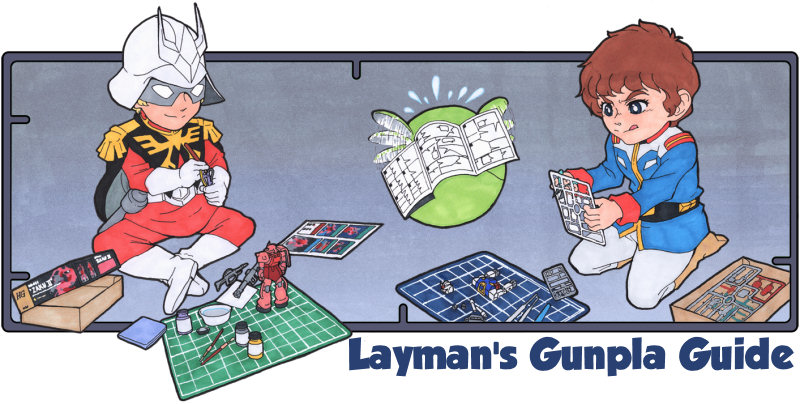What's a hangar base without lights, right? When the year began, I
actually already had the idea of a hangar diorama brewing in my head,
mainly because my very first ever hangar dio was a rushed bust. Simple
as it was, it took me a long time to build, mainly because of
inexperience. I wondered back then, as I was engaging my warp engines
if I can even pull this one off, because of the lighting it will
involve.
A couple of months after, March to be exact, I already
had a circuit in mind, bought 5mm and 3mm LEDs, to augment the 5's and
3's and SMCs I already had on hand, as well as some two prong wafer connectors, a
new soldering gun and batteries. That being said, I don't like
soldering because it's too inconvenient for me, and I try to avoid it as
much as possible, hence why I developed non-soldering methods. Little
did I know that those purchases (and my soldering woes) would prove to
be somewhat "useless" since I "discovered" something I've known and been
aware of for quite some time, but, the gears in my head was on low.
CD-R King has them for quite some time, but, with my mind being set on
building a circuit myself, I ignored it.
In one of my sojourns to
Quiapo (Hidalgo for camera stuff and Raon for electronics), hunting for
parts and such, I saw an assortment of the thing I ignored at CD-R
King. It was then that the gears in my head kicked into high gear, and I
told myself, "why didn't I think of that sooner?"
LED
strips. They come in all sorts of color variants. This particular
roll contains 60 LEDs per meter at 5 meters per roll, and can be bought
at P100 per meter. Prices range from P100 to P400 depending on the type
(there are multi-color and double types which of course, are more
expensive), and for this particular type, the cheapest I found so far is
at P100/m. They are rated at 12 volts, but they can run on a 9V
battery as well with a slight (but acceptable) dimming.
With
these, I can lay down a strip of lights with little soldering involved,
and no worries about the overall circuitry. The strips can be cut in 3
LED sections, and each section can be re-soldered onto each other or
onto a circuit. I can simply cut a strip of appropriate length, and
since it is self-adhesive, is easy to mount on almost any solid surface.
I've used a 120LED/m type to light the underside of the base, and will
use the 60LED/m type (the one pictured above, which incidentally has a
black mount wrapped in weatherproof silicone) for overhead lighting.
It's a good thing I ignored my impulse to buy the LED strips at CD-R
King, because the non-weatherproof type they are selling is already at P680 and the weatherproof type at P780, the only plus is, both have an AC power source included (which I won't need).
Dark Power
Now,
with that out of the way, I had to figure out how to power the LEDs.
I've always managed with button cells for a switch-less single or double LED setup, but with this, those
wouldn't be enough. Four 3V button cells in series can power an entire roll, but
since they are not made to handle high loads, the batteries got
depleted in a matter of minutes. So, I opted to power them up with 9V batteries. I got
9V battery clips, easy enough to set up with the LEDs and the switches
(I will till try to avoid soldering altogether by using two-prong
connectors), but to ensure longevity, I'll wire two 9V batteries, either
with an interrupt/interchange switch, making one battery the main
power, and the other an auxiliary. Switching from main to aux will
still be manual, with a main power switch.
Connecting the
batteries would be simple, but I didn't want to just leave the batteries
loose inside the dio, especially if time permits, I'll be rigging the
diorama to a turntable (for that effortless 360° view). So, I built
battery cases that will mount on the underside of the dio. At first, I
cut pieces of HIPS using the battery as a guide, but I realized it was
taking too long to wait for the individual pieces to mount and cure, more
so, I would have to reinforce each joins, making the case too thick and
heavy as I would like.
So,
I did what should have been obvious. WHIPS are more flexible and
easily bendable, so, I wrapped a strip of 1.0mm WHIPS onto a 9V battery
and cemented the sides with another strip of WHIPS centered on one of
the longer sides of the battery, then I cemented a base on one of the
ends. The battery fit snugly into place, as such I drilled a 3mm hole
on the center of the base so I can simply push the battery out when
needed.
More to come...
Subscribe to:
Post Comments (Atom)
The Newbie Stash
Source This is a collection of specific guides for reference in Gunpla Building and Modeling in General. • Gunpla™ and Modeling Terminolog...

-
Gunmetal . When people talk about it, they are specifically talking about Gunmetal Grey , which is a favorite go-to color for frames when pl...
-
This is another article converted from a Facebook Note post . You’re getting tired of simple snap builds and fussing over those nasty stick...
-
Rather, I had these sent to my school since I was on an off-site training. Bosny Philippines has once again graciously sent me free stuff, ...





4 comments:
NNNNIICCEEE,all the best on this project.
Gonna take a look around for these someday.
Thanks Kriz!
Oh man, your images are gone!!! Any chance you could reupload them?
Fixed the photo links.
Post a Comment